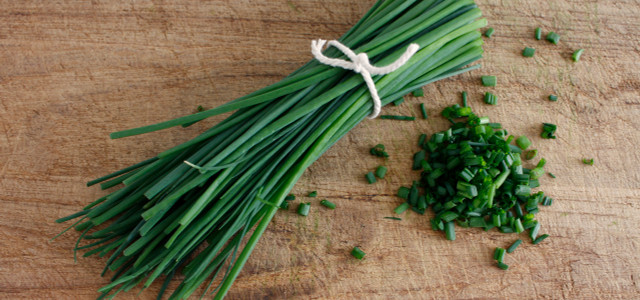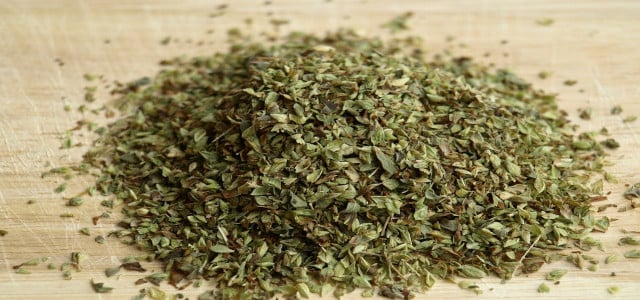Drying chives is easy — you can air dry, oven dry or dehydrate them. Knowing how to harvest, dry and store chives comes in handy, as the herb grows quickly and in large quantities.
Chives taste best when eaten fresh. Unlike other kitchen herbs, they lose most of their aroma when dried. While freezing them is a good option to retain flavor, if your freezer is full there are a few easy ways to dry chives. Read on for useful tips and how to store chives to keep them on hand longer.
Harvesting Chives
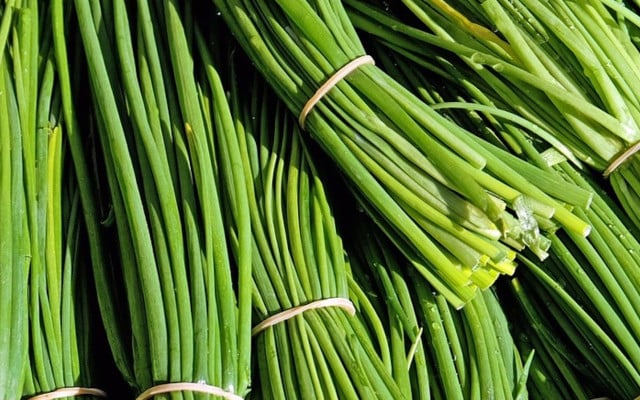
When to harvest chives: It is best to harvest chives in the early morning, after the dew has dried. Like other fresh foods, this is when their flavor is most concentrated.
How to harvest chives: When it comes to harvesting, the “how” is just as important as the “when”. Cut the chives down to 1-2 inches above the ground. This helps them regrow next season.
Instructions for Drying Chives
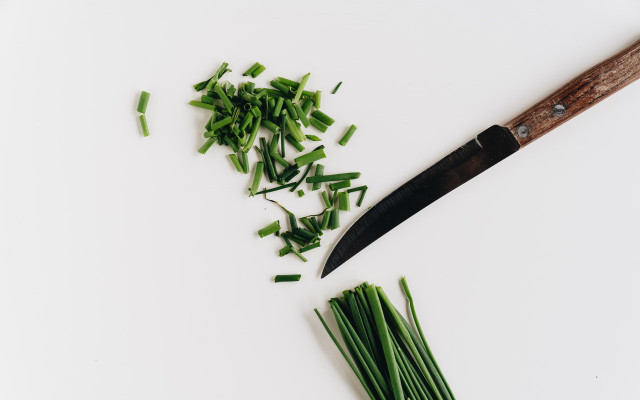


Begin by rinsing your herbs in cold water and remove all leaves that are wilted or damaged. Carefully dab them dry with a clean cloth. Then, use one of the following methods for drying chives.
1. Air Drying Chives
- Gather a handful of chives and bind them into a loose bundle using twine.
- Take a paper bag and cut some holes or slits into the sides for air circulation. Place the chives in the bag and tie another piece of twine around the bag including the chives. This will keep away dust and excessive sunlight.
- Hang the bag in a cool and dry space and leave it there for about two weeks. Check the chives for mold every few days.
- When the chives feel dry and crumble easily, they are ready for storage.
Did you know? You can dry basil almost the same way.



2. Dehydrating Chives
A dehydrator is a good option for drying chives because it is a faster method than air drying and more energy-efficient than the oven. Here’s how to do it:
- Cut the chives into 1/4-inch pieces.
- Cover the chives with a dehydrating screen or mat, if your dehydrator comes with it.
- Dry the chives for roughly one hour at 90°F.
- Do the dried chives crumble between your fingers? Then they’re ready.
3. Drying Chives in the Oven
This drying method requires more energy and isn’t as environmentally friendly as the two options above. Although it is much faster than hang-drying and is a safe way to avoid mold building up during the drying process, we still recommend choosing one of the other methods.
- Preheat the oven to about 170°F or to the lowest temperature setting.
- Cut the chives into 1/4-inch pieces.
- Spread them on a baking sheet lined with parchment paper and leave it in the oven for 1-2 hours. Check regularly to make sure they aren’t burning.
- When the chives crumble between your fingers, they are dry enough. Now you can take the baking sheet out of the oven and let everything cool off.
Note: Try to use dried chives within six months of harvesting them. The more time passes, the more flavor will be lost.
How to Store Dried Chives
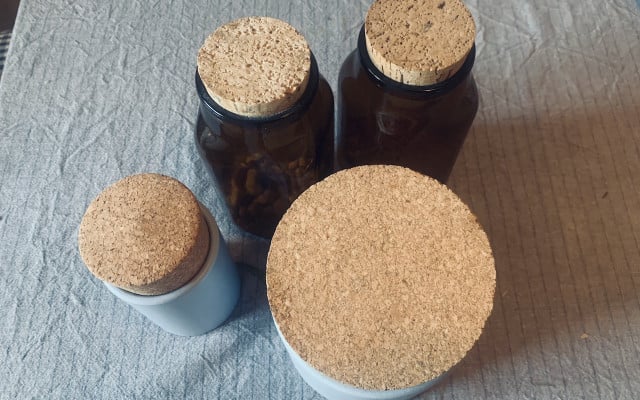


After you have dried chives using one of the three methods above, store them in an air-tight container that is kept in a cool and dark place. It is important that the herbs are completely dry before doing this, otherwise, they may get moldy.
Note: Before using dried chives to refine your dishes, briefly soak them in water to refresh them and revive their wonderful aroma.
Want to learn more about sustainability and the environment? Follow us on Instagram or Twitter!
Do you like this post?






